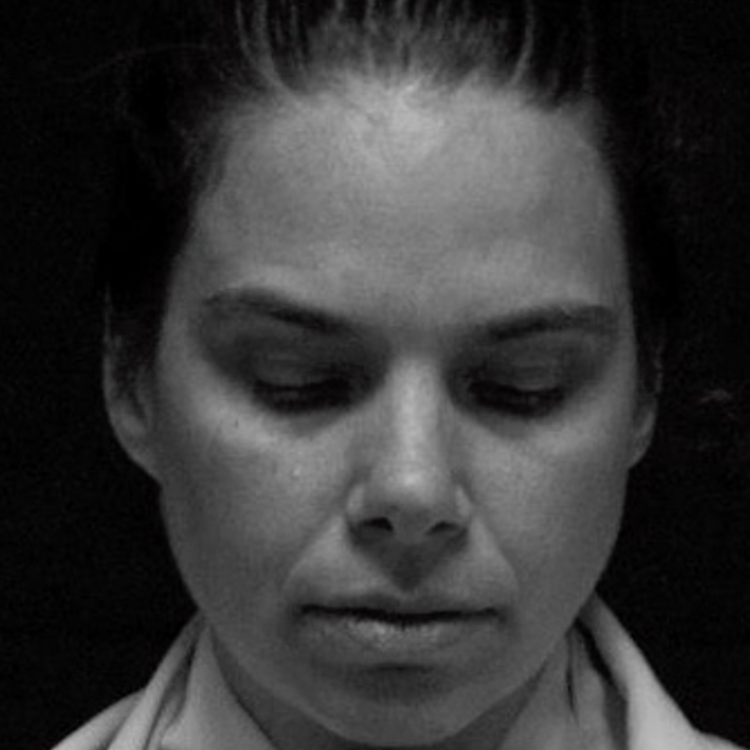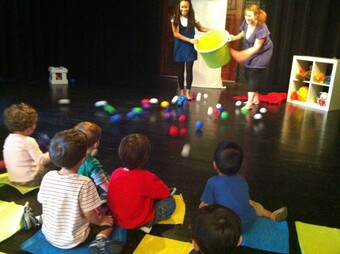Yugen Unforeseen
This four part series explores the pursuit of yugen in theater.
Sprouts
As so often with work, it started as something to amuse myself: to create a "non-traditional" piece for our Noh training recital. I made a crazy sort of Noh—The Noh Tea Party. It was my fifth dramatization of the Alice in Wonderland scene (the first staging was rather pedestrian and performed in my family’s living room in 1969). This most recent attempt in 2002 was in Bloomsburg (Pennsylvania) for the Noh Training Project’s final recital.
That year, there was a local boy (ten or twelve years of age) who would poke his head into our training sessions. He confided in me that he thought Noh “was weird but kinda funny.” I encouraged him to come to our recital. He did. Monitoring him, I saw he was pretty bored after the first fifteen minutes but perked up when drumming was featured. (What kid wouldn’t?)
When we finally arrived at The Noh Tea Party, his delight was evident and infectious. The young man laughed outright at our highly rehearsed antics, even clapping his hands in glee. As an artist, I thought to myself, “This is my audience.”
The next year I staged another "Tiny Noh for Tots" based on an Edward Lear poem. It drew the same delighted response from our tiny audience. (Well, it did feature a half-naked bodybuilder.) After these simple performances, my mentor and hero Richard Emmert critiqued, “It really isn’t Noh. It is more like Kyogen.” Kyogen is a form of traditional Japanese comic theater which also shares deep connections with Noh.
I turned to Jubilith Moore, who was (by default) the project’s Kyogen expert and a woman of infinite kindness. She replied, “Well, it’s not really Kyogen either, but it was pretty magical.”
For myself, unexpectedly, I experienced a minor form of Yugen: Zeami speaks of the “first flower,” when a performer is young and fills a role with exuberant energy—our bodybuilder, his first and only time studying Noh, executed a final stamp that resonated with all the fun and sweetness we had hoped to present. I can’t explain it anymore than that.
Gardening
I met Jubilith in my second year of NTP. Training with someone is how you learn about someone. I could not regale you with stories of Jubilith’s adventures, but I can really talk about bits of her soul. She naturally assumes the role of teacher, although “teacher” is a term that is both too broad and not wide enough: engager, mentor, sister-in-arms… So I had this idea to write for Theatre of Yugen (not exactly true, I hoped TOY would do my plays). This idea kicked around for a couple of years until one year, Jubilith initiated a serious conversation.
Being a completionist, I wanted to do a full five-play cycle. Being a holist, Jubilith wanted to layer and expand. She proposed that the two main actors would be the leads in every play, we would study and perform all four Japanese performance traditions using one per play, then all four at once.
It was a huge and beautifully executed project. Those five little stories in one starry night were tender, scary, sentimental, coarse, and all the other things we want childhood to be. And they were Noh, Kyogen, Kabuki, and puppets mixed with moments of Yugen.
Dark Flower
In my mind, Noh is enigmatically entwined with the Gothic. The most obvious attribute: the veil between this world and the next is a sheer one. True, Gothic has black crepe and Noh silk (with an ogi pattern), but they are both concerned with mysterious revealing rather than concealing (which is, after all, a curtain’s real employment). Gothic themes nestle comfortably in many traditional Noh plays: loss, imprisonment, extended suffering, madness, ecstatic dreams… but especially, “backward-looking thoughts.”
Some might point out that Noh lacks the excess of Gothic. There is no visual, aural, or excess of story, but one cannot deny the emotional excesses of the tortured soul, the ecstatic god, the deranged woman. The emotional excess in Noh is so restrained that it feels, somehow, more Gothic than, say, the ravings of a mad scientist. Gothic is not always melodrama.
Now, you could accuse me of putting my western bias onto a foreign form. A form, you say, I can’t ever hope to appreciate the way it is appreciated in intellectual Japanese circles. Well, of course not—I find in Noh a paradigm that reverberates deeply for me. Isn’t that the hallmark of a masterpiece of human imagination?
Indian Summer
The sorrow and loneliness of the harmonica is palpable to the collective American mind—it is no surprise Jubilith leapt on the idea of using it in Noh. (We were already employing harmonicas in the score of another of the little plays.) I didn’t know I could play the thing…I just tried to hear the patterns of the Noh-kan in its purest form and use my harmonica to do the same. It bound me closer to my own play.
I have always loved the song “She Moved Through the Fair.” It reminds me of the “Irish stories” my mother used to tell—retellings of her grandmother’s. I did not experience the full Irish treatment but they were frightening. (“Oh, she told scarier stories, but you’re too young for them…”).
For me, the tiny play crystalized Noh: a human with story, a ghost with need, a dance, and, finally, stasis or release.
Five Little Plays, One Starry Night
(Play Three) St. Mathew’s Fair is the “sea-change play” of the work. The play occurred to me years ago and I massaged it gently to good effect. It taught me how to write less detail and more depth, less exposition, more being.
(Play Four) The Kabuki play was stripped down and rebuilt five times—TOY attacking each one. It is the most processed and the most delightful of the bunch.
(Play Two) I was obstinate and ill informed for the puppet play. It was fine as a work of H. C. Anderson fan fiction, but as Bunraku, it fails.
(Plays One and Five—first and last) I am still processing these for opposite reasons. Of the first play (Narnia), I can say: TOY is the source for all things Kyogen…they whipped my ass and I still need to edit. (The rules of comedy are so like those of tragedy!)
(Play number five) Pevencey Bay came in a tsunami of inspiration, TOY brain trust, and desperation. It is an honest, joyful play spat onto the page and reveled in.
Back Home
We played in San Francisco and Philly. After the performance in Philadelphia, two women—who were young actors in my campy shows of twenty five years ago—approached me. “That was so much Fun! Like what you made us do in the old “Big Mess” days… But it was, you know, that!” No matter where you go, there you are.









Comments
The article is just the start of the conversation—we want to know what you think about this subject, too! HowlRound is a space for knowledge-sharing, and we welcome spirited, thoughtful, and on-topic dialogue. Find our full comments policy here